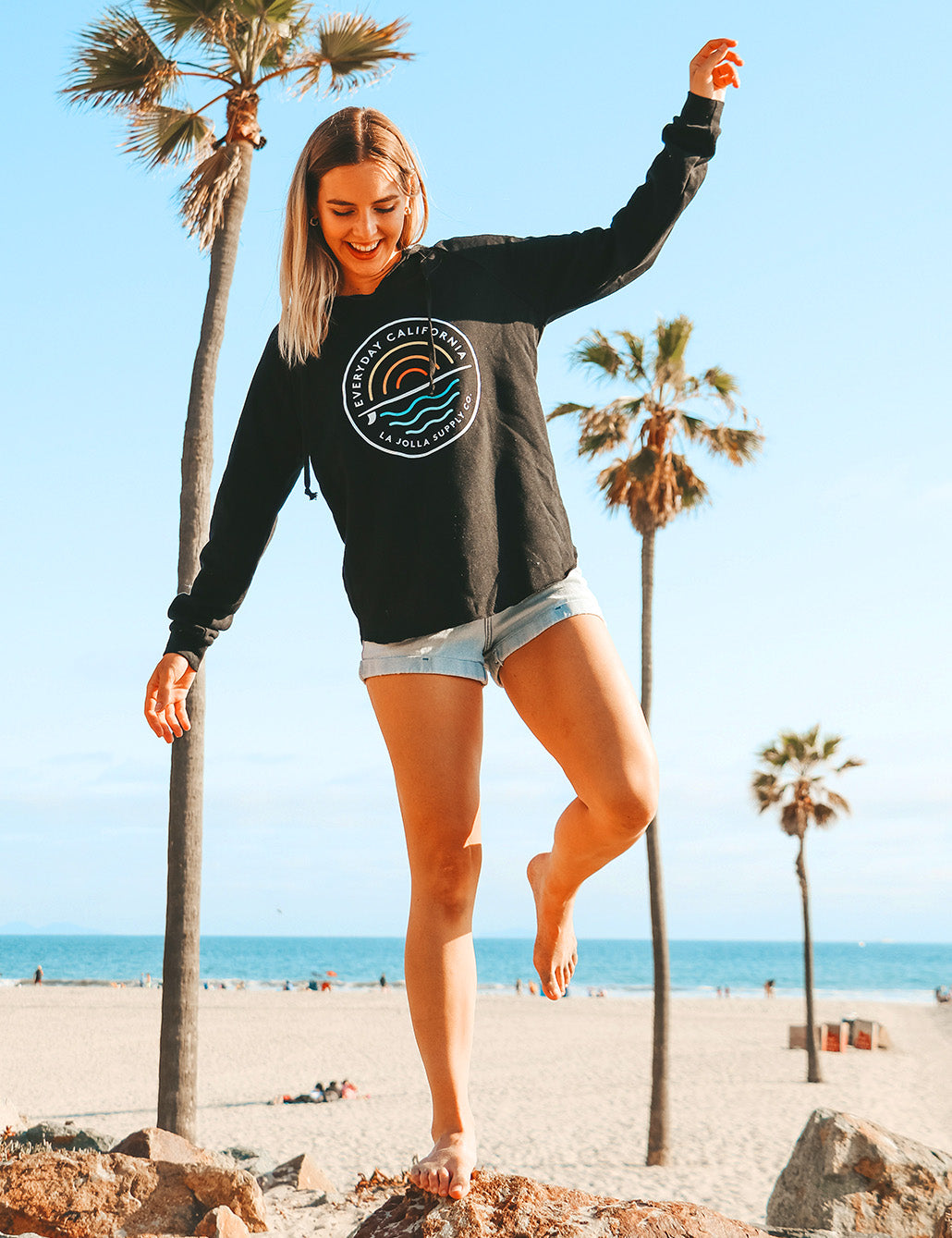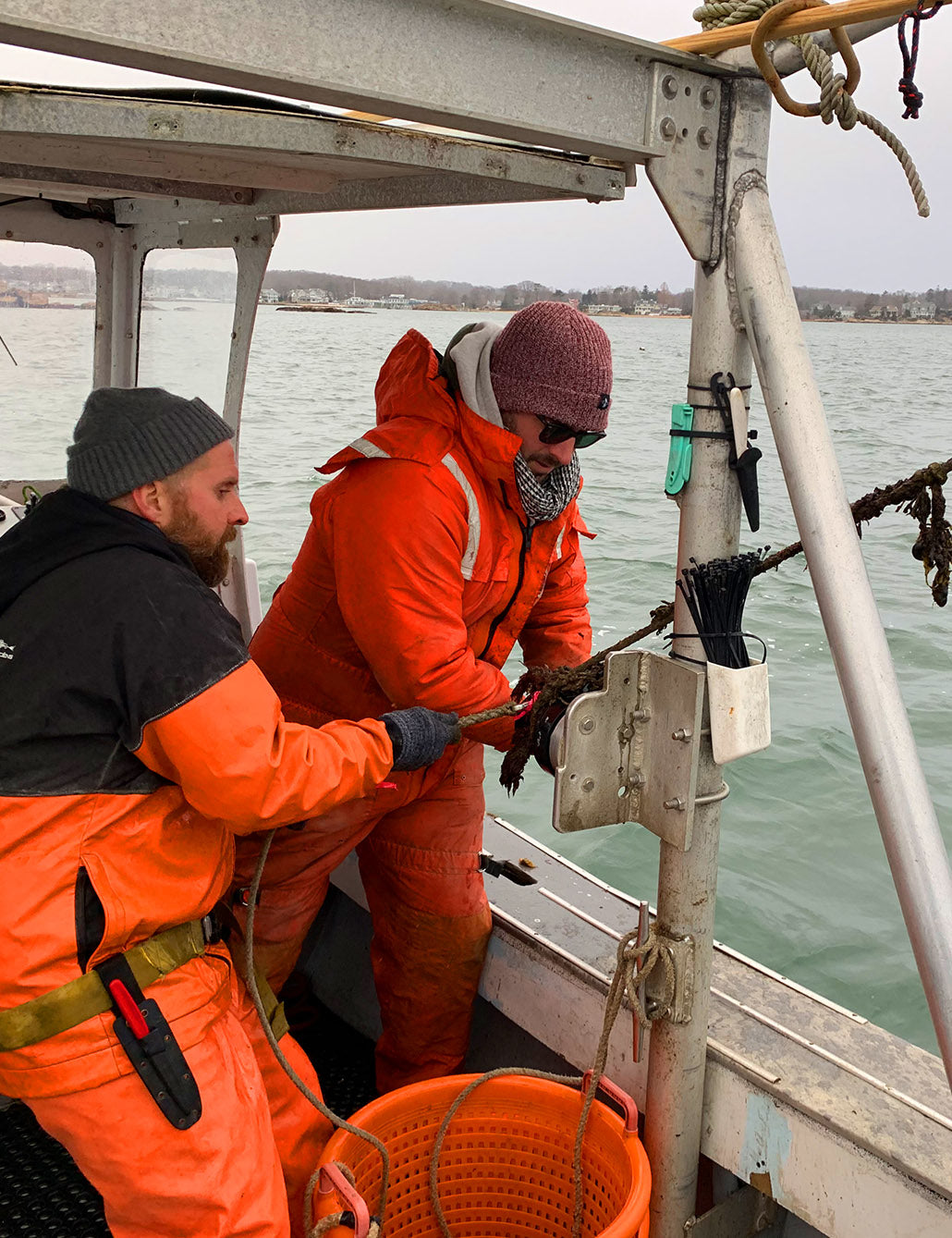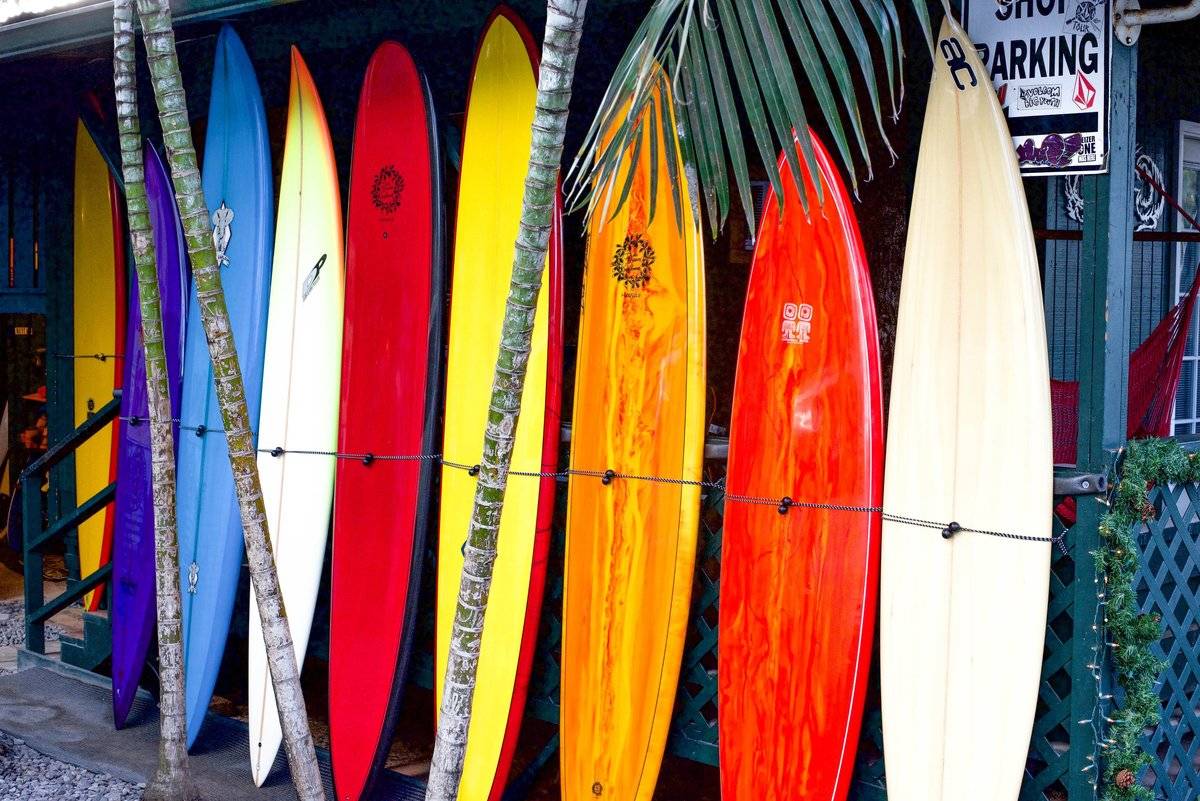By Andrew Iida I Head Writer and Resident EMT
You're probably here because you've realized that there are a ton of different types of surfboards. It used to be much simpler back when people surfed on long, flat pieces of wood, but go to the beach today and you'll see a huge variety of surfboard materials, shapes, and lengths.
If you’ve never surfed, you should come visit us in San Diego and take a Surf Lessons, I promise you won't be disappointed and we can talk surfing till the sunsets. If you don't live near by then you may also want to read our recommendations for Beginner Surfing Gear. If you’re looking to add a board to your quiver, or if you just want to learn more about the different types of surfboards, we've put together an overview of the most common types.
Surfboard materials & construction
There are many different types of materials used to make surfboards. The most common are soft-top foam, wood, polyurethane, and epoxy.
Soft-top surfboards

| Pros | Cons |
|
|
It wasn’t too long ago that soft-top boards had a bad reputation. Because they’re so inexpensive and beginner-friendly, people used to say that they were only good for brand-new surfers who have no idea what they’re doing. “Real surfers use real boards,” they said.
Today, that can’t be further from the truth. Soft-top technology has become so advanced that the best foamies will easily perform just as well as many poly or epoxy boards. We have a South Bay Board Co. Big Betsy 5’5” Hybrid board at the office for our staff to share, and the performance is amazing. We all agree: it’s a real surfboard for real surfers.
For all of our lessons we use the Wavestorm 8ft Classic Surfboard. These things are awesome for beginners, however, I keep a couple in my garage year-round when I just want to have some fun in smaller waves.
Are you worried that using a foam board will hold you back and prevent you from becoming a great surfer? That’s probably because you haven’t seen the pros using them. Here’s professional surfer James O’Brien ripping on a Catch Surf soft top in one of California’s most intense surf breaks:
If you’re looking for your first surfboard, we always recommend a soft-top. But even if you’re an experienced surfer, you should still consider buying a foam board. All of our surf instructors have at least one soft-top in their quiver, and they all have a lot of fun riding them.
Wooden surfboard

This board/work of art comes from ventanasurfboards.com
| Pros | Cons |
|
|
All of the other materials on this list are mid-20th century developments in surfing technology. For thousands of years, people surfed with boards shaped out of wood.
If you’re looking for the most environmentally-friendly surfboard, there are two things you should know: wooden surfboards have the lowest environmental impact, and you are the most awesome kind of person around. Wooden boards don’t need large amounts of synthetic materials, so building them doesn’t create as much waste as other materials.
But there are a few downsides. Because they’re heavier, they’re a little harder to control. If you’re an intermediate to advanced surfer trying to pull off acrobatic stunts on the waves, you’ll want a fiberglass board. They’re also a bit more expensive, so you should think of a wooden board as an investment in the sport instead of entry-level equipment.
Polyurethane (poly) surfboards

| Pros | Cons |
|
|
After WWII, surfers started to experiment with making boards from different materials, and polyurethane (PU) foam quickly dominated the market. Poly boards are made with a PU core that is then wrapped in fiberglass and usually coated with polyester resin.
PU foam and poly resin have the advantage of being inexpensive and easy to work with, so it’s the most common construction for a hand-shaped board. Not all surfboard shapers are equal, but if you find a good one, a hand-shaped board is a huge improvement from a mass-produced board.
The foam and resin in a poly board have a little bit of flexibility, which gives you better feedback and control on a wave. But the flexibility comes with a trade-off: they’re easier to damage, and if you’re not careful, your board will be filled with dents that can cause your fiberglass coating to separate from the foam (delamination). Fortunately, poly boards are very easy to repair.
PU foam is dense, which gives poly boards the weight they need to cut through choppy waves and usually results in a smoother ride. Surfers who ride large, powerful waves often prefer the stability and control that a poly board provides.
Epoxy surfboards

| Pros | Cons |
|
|
Epoxy surfboards have been around since the 1950’s, but they were never very popular until the mid-2000’s. In 2005, the largest supplier of PU surfboard blanks in the country abruptly closed his business. In the vacuum that he created, board makers started switching to epoxy. As more people tried them out, they started gaining a good reputation.
Epoxy boards are made with a polystyrene (PS) or expanded polystyrene (EPS) foam core, which is coated in fiberglass and epoxy resin. These foams are a lot less dense that PU foam, so epoxy surfboards are usually lighter.
This makes epoxy boards popular for beginners because it’s easier to catch waves with a lighter board. More advanced surfers appreciate that epoxy surfboards can surf small waves that would be more difficult to ride with a poly board.
The materials in an epoxy board are very stiff and durable. So while they don’t have as much feedback as a poly board, they’re a lot more durable and will generally last longer with less maintenance.
Epoxy surfboards can be inexpensive when they’re mass produced from molds, but if you’re looking for a hand-shaped board, you should expect to spend about 20% more. The materials are more expensive, harder to shape, and take longer to dry than poly surfboards, but some shapers prefer epoxy because the materials have a lower environmental cost.
Poly vs epoxy surfboards: which one should I buy?
If you’re getting comfortable on your soft-top and looking to move up to a more advanced style of board, it mostly comes down to personal preference.
If you prefer something highly durable, buoyant, and environmentally-friendly, look for epoxy boards. If you prefer a board that gives you more control, is easier to repair, and costs less, look for poly.
But the most important thing is how it feels on a wave. Some people really like the “traditional” feel of a poly board, and others are more comfortable with epoxy. If you can, borrow or rent a few different types of boards and see which construction works best for you.
Surfboard shapes
Surfboards usually fall into five basic categories: shortboards, fish boards, funboards, longboards, and guns.
Shortboard (5'-7')

If you want to pull off some seriously cool, acrobatic stunts on the face of a wave, you’ll need a shortboard. These low-volume boards have pointed noses and thin rails, which gives you the best turning ability. A shortboard allows you to maneuver about the wave with more control than any other board type.
The shortboard has one huge downside: it’s hard to learn to surf one, and is generally only recommended for intermediate and advanced surfers. The low volume, thin rails, and pointed nose make it a lot harder to paddle and balance, so new surfers should always learn the fundamentals on a longboard before switching to a shortboard.
Fish (5'-6'6")

Shortboards are great for fast, powerful waves, but don’t do so well when the surf conditions aren’t that good. When the surf is slow and small, a fish board will allow you to catch a lot more waves.
Fish surfboards get their name from the fish-like notched tail. They’re usually about the same length as a shortboard, but wider and thicker for extra volume. Fish boards are more stable and easier to paddle than a shortboard, so you don’t need to be as advanced to ride one, but we still recommend them for intermediate and advanced surfers.
A lot of people use fish boards exclusively for small, slow waves, but they’re just as much fun to take into larger sets. If you’re looking for a more relaxed ride on large waves without doing a lot of carving, a fish is perfect.
Longboard (9'+)

Every surfer should own a longboard. They’re perfect for every age and skill level, and have some serious advantages over shorter boards.
Longboards are the easiest to paddle, most stable, and catch the most waves. The higher volume and surface area means that you’ll be able to catch waves earlier and ride them longer than anyone on a surfboard. Even when the waves are barely above your ankles, you can surf with a longboard.
Funboard (6.5'-9')

If you’ve ever thought, “Longboarding would be more fun if I could carve more,” or “Shortboarding would be more fun if I wasn't falling down every few seconds” then you need a funboard.
These surfboards are between the length of a shortboard and longboard to combine the best attributes of both designs. Funboards come in a variety of widths, thicknesses, and nose shapes, but most are designed with stability and ease of use in mind.
Funboards are the perfect board to help a beginner transition from longboard to shortboard surfing. A lot of people will go straight from a longboard to a shortboard, but the learning curve can be steep and frustrating because it’s such a huge and abrupt change.
If you’re having trouble switching to a shortboard, try riding a funboard for a while. They have plenty of maneuverability to do bottom turns, and enough stability that you won’t wipe out every time you try.
Gun (7'-11.5')

If this is your first time hearing about a gun, you’re probably not ready for one. Guns are for advanced and expert surfers only. Not because they’re harder to use, but because they’re designed exclusively for surfing on huge, powerful waves that you would be crazy to try to surf as a beginner.
Honestly, you have to be a little bit crazy even as a pro for those kinds of waves
Guns can be as long as longboards, but the nose and tail are pointed for increased maneuverability. When you’re riding a big wave, you need as much control as possible because a small mistake can make a huge injury. Guns are also thick and heavy to cut through the water.
Check out the rest of our Surfing 101 series here!
Surfing 101: The History of Surfing








